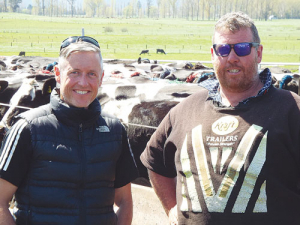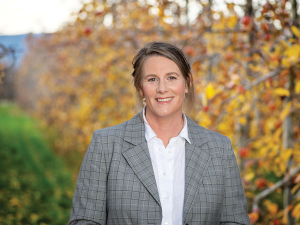Consider the case of Kelvin Thomas’s farm at Reporoa, between Rotorua and Taupo.
Thomas is a third-generation dairy farmer whose family took on the property in 1953 and has farmed it since. Milking 550 cows on 200ha, the farm is now three quarters of the way through a change to autumn calving, which will see it hitting 600 cows by March 1, 2018. Animals are bought-in commercial Holsteins that typically arrive on the farm at three and a half years old.
Located near the long-established dairy factory at Reporoa, the land became a dumping ground for waste whey product from the 1980s which has left a legacy of high phosphorous (P) and potassium (K) levels which make the ground very acid.
Managing the area requires applying high volumes of lime to create a balance, but the practicalities mean that grasses are shallow-rooted, preferring to establish in the lime-rich upper layers rather than push down roots into the lower layers; this leads to plants being pulled if over-grazed. And the option of growing crops to use up the high P and K content such as maize is stymied by the region’s late frosts.
Along with the whey by-product, the land also got high doses of dairy effluent, so the property struggles with “toxic grass,” says nutritionist Pip Gale.
Particularly in the early part of the growing season, this shows up in cows coming into the milking shed in a lethargic state – “skittish”, Thomas says, and showings signs of explosive excretion. This sub-acute ruminal acidosis (SARA) is more commonly associated with farms attempting to feed high levels of grain in the diet. Gales suggests that high potassium levels and high sugar levels in the grass create much the same effect.
Typically, SARA can depress intake, reduce digestibility, reduce yield and butterfat percentage and result in lameness; it is usually found when rumen pH is between 5.2 and 6.1.
To help Thomas and Gale understand the impact of the farm’s feeding regime through the season, they have installed Smart Farm Data’s SmaXtec boluses in five cows in each of the two herds. The device sends a reading to a smartphone or desktop PC every 6 - 8 minutes; it measures rumen pH for 180 days, plus general activity and body temperature. If any readings deviate from pre-set parameters, an alert is sent to the farmer and nutritionist, who can choose to take remedial actions. The system is sensitive enough to display when a cow takes a drink, which typically shows a drop in body temperature, or as happened recently when a cow jumped an electric fence break and gorged on fresh pasture.
From a practical viewpoint, indications provided by the sensors allow the team to add or remove minerals such as Acidbuf, which contain magnesium and calcium to tweak rumen pH. The tweaking is intended to keep the rumen in the middle-ground rather than reacting to the highs and lows of the desktop displays.
For an outlay of about $6000, Thomas sees major benefits being derived over the peak production years when the cows are four to eight years old, which is practical because the device will continue to transmit for four to five years.
The system also helps staff understand the impact of moving cows on to, or allowing them to stay too long, on acid pastures, which Thomas says only means positive results.
















